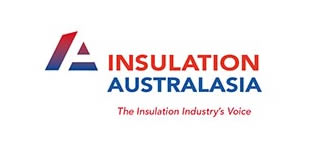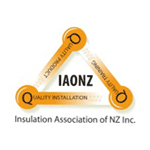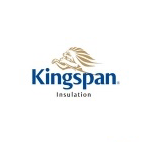By Poppy Johnston
UPDATED: Less than 30 of the 3200-5000 insulation installers working in Australia have been formally accredited to correctly install insulation. Fortunately, government buying power could turn this around.
Insulation is low hanging fruit when it comes to improving the thermal efficiency of Australian homes but compared to other countries, including our neighbours across the ditch, Australia is lagging in policies and programs to ensure safe and quality installation.
That’s the finding of a new independent report prepared by the Energy Efficiency Council (EEC) and the Australian Sustainable Built Environment Council (ASBEC), which was jointly funded by the Victorian and NSW governments along with Insulation Australasia and the Insulation Council of Australia and New Zealand.
The ill-fated Home Insulation Program made the critical error of assuming that insulation was an unskilled occupation, when in fact installers require basic skills and the often-overlooked “insulation supervisors” require substantial knowledge of products, building regulations and safety procedures.
Over the last decades there been efforts to bring the industry up to scratch, EEC head of policy Rob Murray-Leach told The Fifth Estate, but the lack of a comprehensive, integrated plan has significantly reduced the impact of these efforts.
For example, the insulation industry worked developed a training and accreditation program with the Association of Wall and Ceiling Industries and the Clean Energy Council. Unfortunately, less than 30 installers have been accredited, representing a tiny 0.5 per cent of the 3200-5000 paid installers in Australia.
The problem is, according to Murray-Leach, is that developing a training program needed to be coordinated with creating drivers for installers to get accredited.
The UK, by contrast, has driven accreditation levels up sharply through government procurement.
To do any insulation work on a public or low-income housing project in the UK, installers need to have the right qualifications.
“If you want any government money then you have to have certain qualifications and follow best-practice procedures.”
The New Zealand government has also forged a culture of compliance through its “Warmer Kiwi Homes” for installing insulation, moisture barriers and heating systems in low-income homes. Key to this generous grant program, which covers on average 67 per cent of the cost of upgrades, is that insulation providers must get onto pre-approved panels to service each region.
Murray-Leach says that lucrative government work is enough to bring the bulk of the market up to a higher standard of quality control.
“In these places you won’t find an insulation company that doesn’t have the skills in place to go for this government work. This means that they also have the skills and processes to deliver high quality service to the broader private sector.”
If the goal is to bring the whole industry up to speed, he adds, it’s important to make a blanket rules that all government programs will require high quality providers, rather than just add requirements to a few programs on an ad hoc basis.
Germany is the gold standard
The gold standard for quality control and compliance is in Germany, where there’s “a deep pride in doing a great job” that has its origins in medieval times. While it’s not easy to replicate attitudes forged over hundreds of years, for Australia, it’s worth observing the importance of having highly skilled individuals that pass on their craft to industry newcomers.
The other glaring issue is a lack of compliance in construction, which is a broader problem affecting the entire building and construction industry. This has been detailed extensively in the damning Shergold Weir report. In NSW, a state Building Commissioner, David Chandler has been appointed to rejig regulation in the industry.
Murray-Leach says the new report will inform an “industry-led roadmap” to improve quality control in the industry.
A whole house retrofit is what people really need
All comfortable, energy efficient homes need insulation, but there’s more to a complete “thermal shell retrofit”. An integrated retrofit also includes airtightness, ventilation, moisture control, high performance windows and HVAC upgrades, and depending on the condition of a home could be similar to the price of a kitchen upgrade.
While an investigation into these other features was outside the scope of the report, Murray-Leach recognises that the best outcomes are achieved when a complete retrofit is managed by an expert from start-to-finish.
Currently, we effectively leave homeowners to manage the complexity of an integrated retrofit, resulting in limited coordination between insulation installers, HVAC companies and air tightness and ventilation projects.
Many homeowners desperately want a warmer home, and without easy access to a experts that can deliver integrated retrofit experts, they have to jump into the energy efficiency retrofit process with little knowledge. This reduces the impact on thermal comfort and risks ventilation, moisture and mould problems.
“That’s why you hear people say, ‘build it tight, ventilate it right’.”
Murray-Leach is still working through retrofitting his own house, and says that there’s a clear gap in the market with very few companies offering one-stop-shop solutions that look after the retrofit from end-to-end.
“However, just like insulation training, we’ll need to deal with both supply and demand. We’ll need experts to band together to deliver integrated retrofits, but we’ll also need homeowners to start demanding integrated retrofits. If we do it right, the resulting renovation wave would deliver a massive boost to the construction industry.”









